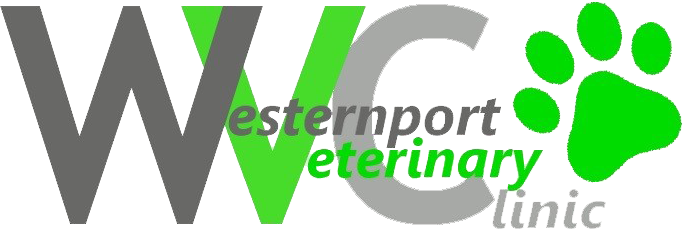Animal Rehabilitation and Wellbeing
Every pet is unique and our Rehabilitation Team will develop and tailor a plan just for your pet to increase their mobility and minimize any pain and discomfort they may be experiencing as a result of an injury or a chronic condition. Once your vet has given your pet a diagnosis and medications prescribed, a rehabilitation session can be undertaken. Our trained team will help your pet move more freely over a multi-step process.
Rehabilitation is not just limited to dogs. Cats, guinea pigs, rabbits, goats, horses, just to name a few can benefit! We aim to provide a service that will support your loved ones quality of life and help them get back onto their feet.
Conditions where Rehabilitation can help:
Arthritis
Post cruciate surgery
Intervertebral Disc Disease
Femoral Head Osteotomy
Degenerative Myelopathy
Post fracture repair
Patella luxation surgery
Tendon and muscle injuries
Neurological Disease
Hip/Elbow Dysplasia
Tripaws – Animals with only 3 legs
Senior pets
Cognitive Dysfunction
Paralysis
Obesity
working HARD ON balance
Step 1: Assessment
During your initial rehabilitation session your pet will be assessed for:
Pain - Can they rise easily and quickly? Are any joints or muscles sore preventing them from playing and joining in fun times?
Muscle wastage or atrophy - Are your pets muscles as big as they once were? Does one leg have less muscle than the other?
Lameness - Is you pet limping all the time or only after rest or exercise?
Fitness - Lifestyle? Does he/she want to exercise?
Joint motion - Can your pet move freely when out for a walk or trot? Is it difficult for them to walk up steps or get in the car?
Neurological - Are signals from your pets brain getting through to their legs correctly and allowing it to walk, play without falling?
Weight - Being overweight (even a small amount) causes stress on painful joints and the heart.
Hazel the bulldog PRACTICING BALANCE
Degenerative Myelopathy causes weakness in the hindlegs. Pud is fitted with a Help ‘Em Up Harness Hip left to help him walk
Gizmo enjoying rehab
Step 2: Interventions/Treatments
Depending on the outcome of the assessment, a range of modalities, exercises and nutraceuticals will be used and tailored to your pets particular requirements.
The program may include all or a combination of the following:
Massage - Massage therapy relaxes muscle tissue, which reduces painful contractions and spasms and allows your pet to move more freely. Massage also helps to increase the circulation of blood and lymphatic system. Blood delivers oxygen and nutrients to muscles, organs and other tissues. The lymphatic system flushes unwanted toxins from the body. Stimulating this process encourages healthy cells and relieves inflammation.
Range Of Motion - Used to increase the range of movement in joints and muscles and helps relieve stiffness and pain.
Therapeutic Exercises - Different types of exercise are used to build strength in weak areas of the body, promote stability and helps retrain the bodies ability to stand and walk normally and aid weight loss.
Treadmill - Using a treadmill will help your pet walk and trot normally, help strengthen muscles and can assist with the amount of exercise your pet can do in the future.
Heat or Ice therapy - Heat aids circulation and healing and Ice reduces inflammation.
Nutraceuticals - Helps to keep joints, bones, muscles and skin healthy.
Balance and strength training reduces your pets chances of further injuries by allowing the body to respond to challenging situations without causing harm. It allows them to rise easier, play more, and if started after surgery, it will help to regain strength and muscle mass quicker.
Name: Liam Age: 12 yrs Breed: Pointer History: Urinary Incontinence, Spondylosis, carpal arthritis IN right foreleg, hyperextension of right hock
Tobirama working his whole body after both femoral heads of his femurs were removed
Step 3: Plan
There is no quick remedy for a long term illness or condition. To have the best chance of success and increase your pets quality of life you will need to continue with a home plan. Specific exercises will be discussed and shown to you. Sometimes it takes some adaptation on your behalf and some changes to the life you currently lead, but once you start making it part of your life the benefits far outweigh the discomfort you or your pet may feel.
Weekly of fortnightly revisits are required initially and plans are changed based on goals reached.
Example of initial Home Plan:
DAILY
Heat pack across pelvis and carpus (wrist) for 10 mins prior to exercise
Walking on lead 15 mins twice daily
Passive Range of Motion once or twice daily
ALTERNATE DAYS
Sit to Stand x 5 - Strengthens hind legs
Forelegs on balance cushion with gentle pushes on cushion x 10 rest 10 secs, repeat 3 times.
Same for hindlegs on balance cushion- Balance cushions develop core muscles and balance
Drop to sit x 5 - Strengthens front legs
IN CLINIC REVISIT IN ONE WEEK
Meet our rehab nurse, Claire!
Claire is our animal rehabilitation therapist as well as having over 20 years of vet nursing experience, she is passionate about helping your pets through their surgeries and then looking after them through their post op rehabilitation.
‘Rehabilitation is the action of restoring our much loved family members to as close to normal function after injury or a chronic condition’.








